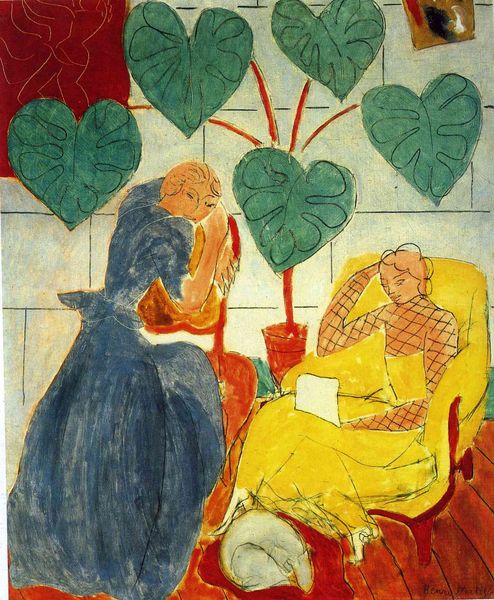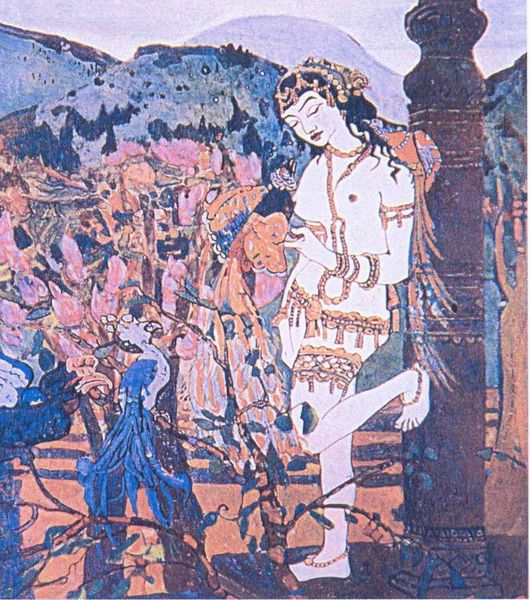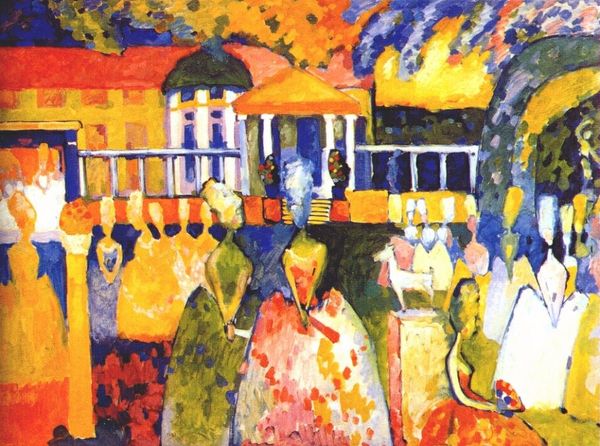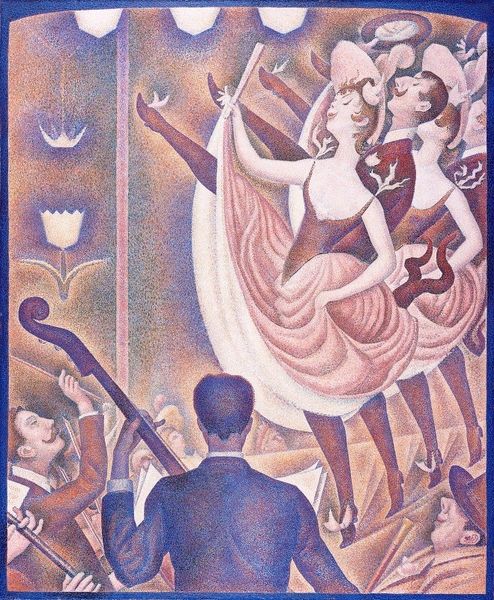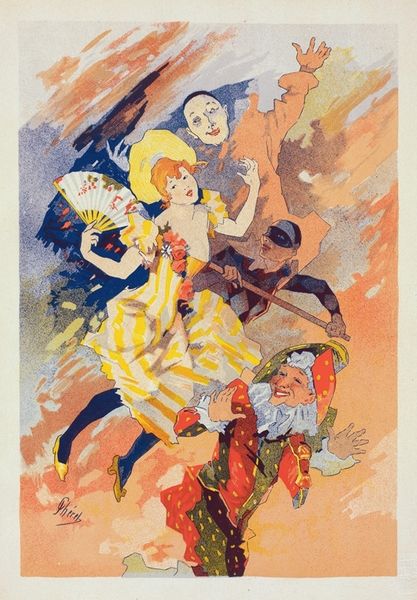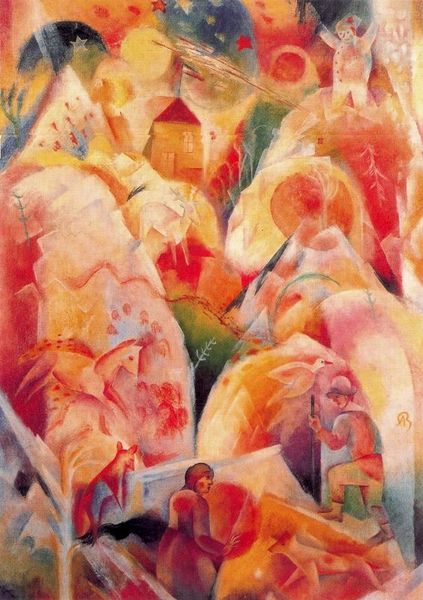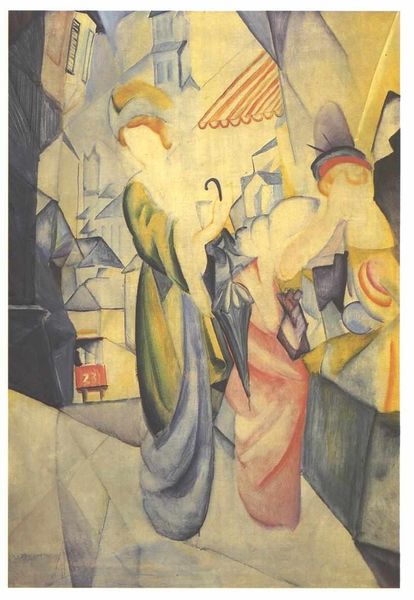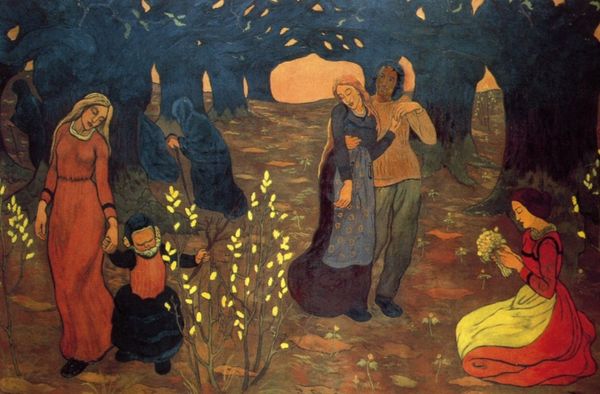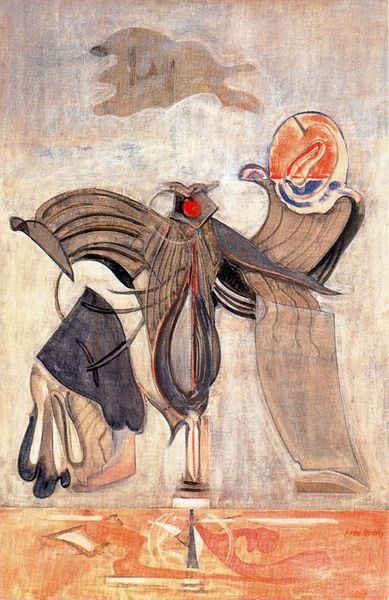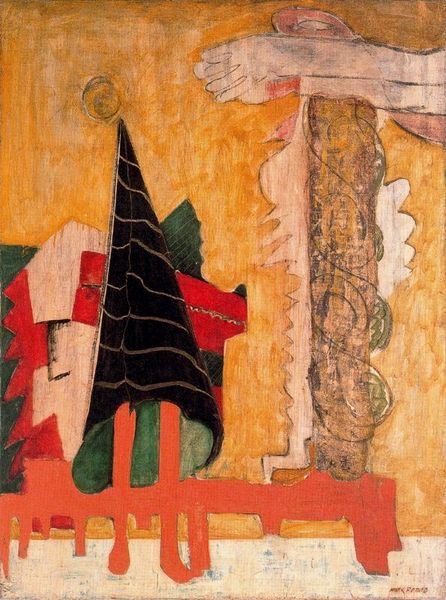
Copyright: Henri Matisse,Fair Use
Editor: We're looking at Henri Matisse's "Black Dress and Violet Dress," painted in 1938. It's an oil on canvas, portraying two women in a domestic setting. There’s a vibrant, almost dreamlike quality to it, with its bold colors and flattened perspective. How do you interpret this work? Curator: I see it as Matisse exploring the multifaceted nature of the female figure within a carefully constructed interior. Look how he juxtaposes the decorative patterns—the floral wallpaper, the dresses themselves—to create a dynamic tension between surface and depth. Consider the time period: 1938, on the eve of World War II. Do you think this interior scene reflects a desire for refuge, perhaps a deliberate retreat into a constructed world of beauty? Editor: That's a really interesting point about the historical context. I hadn't considered it in that light, but it makes sense. The artificiality of the setting does feel like a kind of escapism. Curator: Exactly! And how might we read the women's roles? Are they simply decorative elements within this constructed space, or are they active participants? How might their subjectivities resist the flattening gaze? What does the use of bold, unmodulated color signify in relationship to femininity? Editor: It's a complex interplay between objectification and agency, then. Perhaps the flatness also points to the limits of representation, its inherent artifice. Thanks, I'm definitely going to be thinking about this piece in new ways. Curator: Indeed. By considering the historical and social forces shaping both the artist and his subjects, we unlock a richer understanding of Matisse’s project, especially concerning gender and representation. I've really enjoyed unpacking the layers of this composition.
Comments
No comments
Be the first to comment and join the conversation on the ultimate creative platform.
